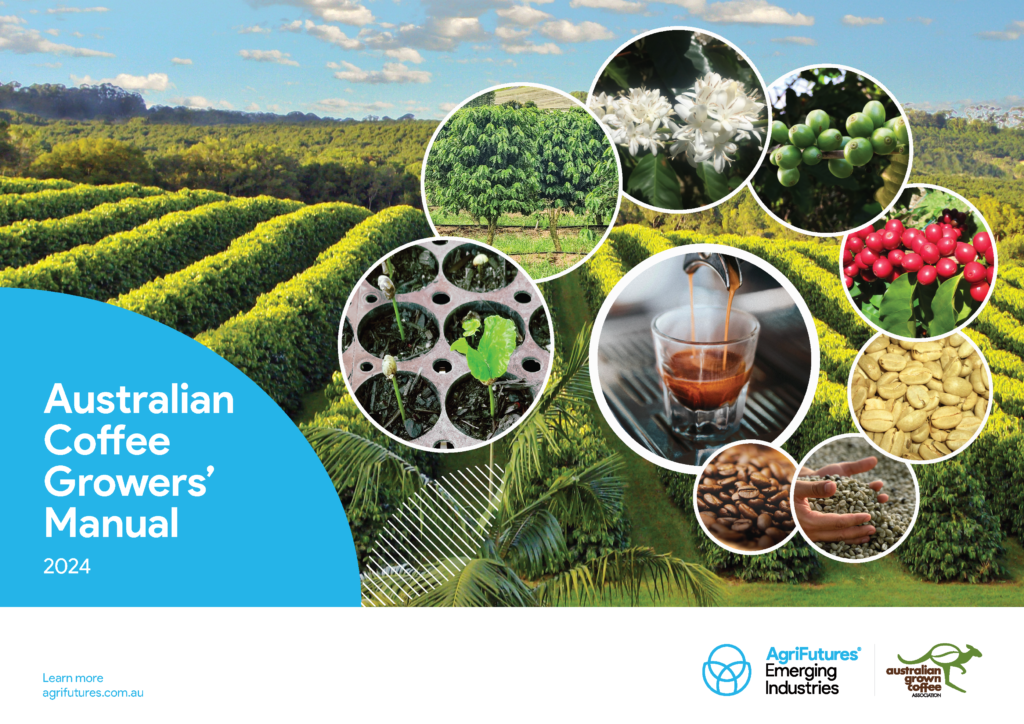Order a copy of the Australian Coffee Growers’ Manual here
AgriFutures Australia’s Emerging Industries Program has determined that the Australian coffee-growing industry is strategically positioned to expand the current high-priced export opportunities for unique Australian coffees, which are being limited by lack of supply. Domestically, 99.5% of coffee consumed is roasted from imported beans and there are significant opportunities to increase that share by import substitution. The unique story and quality of Australian-grown coffee can position the industry in these premium market segments. Key initiatives outlined in the Australian Coffee Strategic RD&E Plan are the creation of a consolidated system to maximise the viability of the industry and the formalisation of practices in this Australian Coffee Growers’ Manual, incorporating new and emerging industry concepts.
This Australian Coffee Growers’ Manual addresses the challenge of disseminating good practices and aims to equip growers with comprehensive knowledge on best practices for coffee cultivation in Australia’s diverse climatic zones. The manual serves as a repository of expert knowledge and the practical experiences of industry stakeholders, presented in a user-friendly format. The dynamic nature of the manual allows for updates, ensuring it remains a relevant and valuable resource for both established and prospective growers now and into the future.
The manual addresses several key recommendations of the Strategic RD&E Plan to grow the Australian-grown coffee industry. It underscores the importance of maintaining biosecurity to protect against pests and diseases, given Australia’s unique position as a region free from the most serious coffee pests. The manual also highlights the minimal use of pesticides, aligning with community expectations for a sustainable environment and allowing coffee plantations to co-exist with urban development and sensitive land uses.
Further, the manual acts as an essential resource, offering a methodical framework for site assessment tailored to the unique requirements of coffee production in terms of environmental and geographical factors. It outlines a progressive sequence of actions – from conceptualising and designing a plantation to the preparatory work, propagation and establishment – with the aim to provide growers with the knowledge to create thriving coffee plantations.





